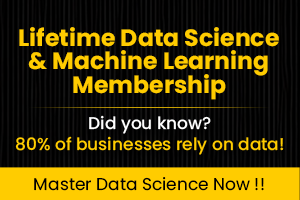In today’s fast-paced digital world, businesses are racing to stay competitive. Enter AI-powered business transformations—a revolution driven by the dynamic duo of Artificial Intelligence (AI) and Robotic Process Automation (RPA). These technologies are reshaping workflows, boosting efficiency, and unlocking new possibilities across industries. Whether you’re a small business owner or a corporate leader, understanding how RPA and AI work together can transform the way you operate. In this blog, we’ll explore their synergy, real-world applications, and why they’re essential for the future of work.
The Rise of AI and RPA in Business
Digital transformation isn’t just a buzzword—it’s a necessity. Companies are leveraging AI in business to innovate, while RPA streamlines the mundane. Together, they’re creating smarter, faster, and more adaptable workflows. From automating repetitive tasks to enhancing decision-making, AI-powered business transformations are helping organizations save time, cut costs, and delight customers. Ready to see how? Let’s dive into the basics and beyond.
What Is RPA? Understanding the Basics
Robotic Process Automation (RPA) is a technology that uses software “bots” to automate repetitive, rule-based tasks—like data entry, invoice processing, or email sorting. Think of it as a digital assistant that mimics human actions without needing coffee breaks. RPA excels at handling structured, predictable processes, making it a game-changer for operational efficiency.
Why does it matter? Businesses adopting RPA report up to 30% cost savings and significant time reductions, according to industry studies. It’s the foundation of automation—but when paired with AI, it becomes unstoppable.
How RPA and AI Are Linked and Used Today
While RPA handles the “what” of automation, AI brings the “how” and “why.” RPA and AI are linked through their complementary strengths: RPA executes tasks, and AI adds intelligence—like machine learning, natural language processing (NLP), and predictive analytics. Together, they enable smarter automation.
For example:
- RPA can extract data from forms, while AI interprets unstructured text.
- RPA processes customer requests, while AI predicts what they’ll need next.
Today, businesses use this duo to tackle complex workflows, from customer service chatbots to fraud detection systems. The result? AI-powered business transformations that go beyond efficiency to deliver strategic value.
10 Real-World Examples of Robotic Process Automation in Action
Curious about robotic process automation examples? Here’s how RPA is making waves across industries:
- Finance: Automating invoice processing, reducing errors, and speeding up payments.
- Healthcare: Managing patient records and appointment scheduling with zero manual input.
- Retail: Streamlining inventory updates and order processing for faster fulfillment.
- Customer Service: Handling routine inquiries via bots, freeing agents for complex issues.
- Insurance: Processing claims by extracting data from forms in minutes, not days.
- Manufacturing: Automating supply chain updates and tracking production metrics.
- HR: Onboarding employees by auto-filling forms and syncing data across systems.
- Banking: Reconciling transactions and flagging discrepancies in real-time.
- Logistics: Tracking shipments and updating delivery statuses automatically.
- Education: Managing enrollment paperwork and grading routine assignments.
These robotic process automation examples show RPA’s versatility—whether you’re a startup or a global enterprise, it’s a tool for everyone.
Automating Repetitive Tasks with AI: Beyond the Basics
RPA shines at rule-based tasks, but AI in business takes automation further. AI can handle unstructured repetitive tasks—like sorting emails with varied phrasing or analyzing customer feedback. By learning patterns, AI reduces errors and adapts to new scenarios.
Benefits:
- Time Savings: Cut hours spent on manual data entry or document reviews.
- Accuracy: Eliminate human mistakes in repetitive processes.
- Scalability: Automate more as your business grows.
For instance, an AI-powered tool might scan thousands of contracts, flag key terms, and summarize findings—tasks RPA alone couldn’t touch. This is automation with a brain.
Improving Decision-Making with AI Insights and Analytics
Data is the lifeblood of modern business, but raw numbers don’t tell the full story. AI-powered business transformations leverage analytics to turn data into decisions. AI sifts through massive datasets, spots trends, and predicts outcomes—giving leaders actionable insights.
Example: A retailer uses AI to analyze sales data, identifying which products sell best during holidays. Armed with this, they adjust inventory and marketing in real-time, boosting profits. With AI insights and analytics, decisions aren’t guesses—they’re strategic moves.
Enhancing Customer Experiences with AI
Happy customers are loyal customers, and AI in business is redefining how companies deliver value. AI personalizes interactions, predicts needs, and resolves issues faster. Think chatbots that answer questions 24/7 or recommendation engines that suggest the perfect product.
Tips for Implementation:
- Start small with an AI chatbot for FAQs.
- Use customer data (ethically) to tailor offers.
- Integrate AI with existing CRM tools for seamless service.
A telecom company, for example, might use AI to predict when a customer’s likely to churn and offer a discount—turning frustration into retention.
Strengthening Cybersecurity with AI Innovations
In a world of rising cyber threats, AI-powered business transformations are a shield. AI detects anomalies, automates responses, and learns from attacks to stay ahead. It’s like a digital security guard that never sleeps.
How it works:
- Spots unusual login patterns in milliseconds.
- Auto-blocks suspicious IPs.
- Analyzes past breaches to predict future risks.
For businesses, this means fewer breaches and more trust. In 2025, as cyber risks grow, AI’s role in security is non-negotiable.
Conclusion: The Future of AI and RPA in Business Transformation
The marriage of RPA and AI is more than a trend—it’s the future of work. From automating repetitive tasks to enhancing cybersecurity, these tools are driving AI-powered business transformations that save time, cut costs, and spark innovation. As AI evolves and RPA scales, their impact will only deepen, reshaping industries and redefining success.
Ready to revolutionize your workflows? Start exploring RPA and AI today—your business’s next big leap is just a bot away.



